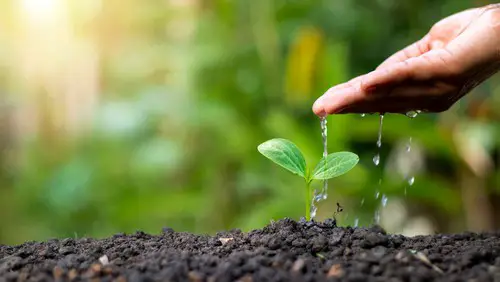Thuja Green Giant is a popular evergreen tree that is widely used in landscaping due to its fast growth rate, tall stature, and dense foliage. However, it is not uncommon for these trees to start turning yellow, which can be a cause for concern for many homeowners.
Understanding thuja green giant turning yellow is crucial to maintaining the health of these trees. Yellowing can be a sign of a variety of issues, including nutrient deficiencies, pest infestations, or diseases. Identifying the underlying cause of yellowing is essential to prevent further damage and ensure the longevity of the tree.
Common causes of yellowing include over or under-watering, improper fertilization, and pest infestations. Preventive measures and solutions include regular watering, appropriate fertilization, and prompt treatment of any pest or disease issues.
Best practices for Thuja Green Giant care also include regular pruning to maintain its shape and promote healthy growth.
Key Takeaways
- Thuja Green Giant trees can turn yellow due to a variety of issues, including nutrient deficiencies, pest infestations, or diseases.
- Identifying the underlying cause of yellowing is crucial to prevent further damage and ensure the longevity of the tree.
- Preventive measures and solutions include regular watering, appropriate fertilization, and prompt treatment of any pest or disease issues, as well as regular pruning to maintain its shape and promote healthy growth.
Also don’t miss:
Understanding the Yellowing of Thuja Green Giant
Thuja Green Giant is an evergreen tree that is commonly grown for its lush foliage and fast growth rate. However, sometimes the foliage of the Thuja Green Giant can turn yellow, which can be a cause for concern among gardeners.
In this section, we will explore the reasons why Thuja Green Giant may turn yellow and what can be done to prevent it.
Causes of Yellowing Foliage

There are several reasons why Thuja Green Giant may turn yellow:
- Watering issues: Over- or under-watering can cause the foliage to turn yellow. Thuja Green Giant requires regular watering, especially during the first few years after planting.
- Nutrient deficiencies: Yellowing foliage may be a sign of nutrient deficiencies, such as nitrogen, iron, or magnesium. Soil testing can help determine if there are any nutrient deficiencies.
- Pest infestations: Pests like spider mites, scale insects, and bagworms can cause the foliage to turn yellow. Regular inspection and treatment can help prevent pest infestations.
- Diseases: Fungal diseases like root rot and leaf spot can cause the foliage to turn yellow. Proper sanitation and treatment can help prevent the spread of diseases.
Prevention and Treatment
Prevention is key when it comes to yellowing foliage in Thuja Green Giant. Here are some tips for preventing and treating yellowing foliage:
- Proper watering: Ensure that Thuja Green Giant is receiving regular watering, especially during the first few years after planting.
- Soil testing: Regular soil testing can help determine if there are any nutrient deficiencies that need to be addressed.
- Pest control: Regular inspection and treatment can help prevent pest infestations.
- Disease management: Proper sanitation and treatment can help prevent the spread of diseases.
Common Causes of Yellowing
Thuja Green Giant is a fast-growing evergreen tree that is popular for its lush foliage and ability to provide privacy. However, sometimes the leaves of the tree may turn yellow, which can be a sign of an underlying problem. Here are some common causes of yellowing in Thuja Green Giant:
1. Soil and Water

Yellowing of Thuja Green Giant leaves may be caused by soil and water issues. Improper watering, such as overwatering or underwatering, can lead to yellowing of leaves.
Thuja Green Giant prefers moist, well-drained soil, so if the soil is too dry or too wet, it can cause yellowing. Additionally, soil with a pH that is too high or too low can also lead to yellowing of leaves.
2. Pests and Diseases
Pests and diseases can also cause yellowing of Thuja Green Giant leaves. Insects such as cypress tip miner larvae and bagworms can cause yellowing of the tips of branches.
Fungal diseases such as canker, phytophthora root rot, and blights can cause yellowing of leaves as well. Scale insects can also infest the tree, causing yellowing of leaves.
3. Nutrient Deficiency
Yellowing of Thuja Green Giant leaves can also be caused by nutrient deficiency. A lack of nitrogen, potassium, or iron can cause yellowing of leaves. Thuja Green Giant prefers slightly acidic soil, so a deficiency in these nutrients can cause yellowing.
4. Sunburn and Stress
Thuja Green Giant can also experience yellowing due to sunburn and stress. The tree prefers full sun to partial shade, so if it is planted in an area with too much shade, it can cause yellowing of leaves. Additionally, stress caused by extreme weather conditions, such as drought or excessive heat, can cause yellowing of leaves.
Preventive Measures and Solutions
Preventing Thuja Green Giant from turning yellow requires proper care and maintenance. Gardeners can take several measures to ensure their trees remain healthy and vibrant.
1. Soil and Watering
Green Giants thrive in well-draining soil, so planting them in clay soil can cause root rot and yellowing foliage. Gardeners should prepare the hole with compost and create a raised bed to improve drainage. Mulching around the base of the tree can also help retain moisture and prevent soil erosion.
Overwatering is another common cause of yellowing foliage and root rot. Gardeners should water their trees deeply once a week, especially during dry spells. They should also avoid watering the foliage and instead focus on the base of the tree.
2. Pests and Diseases

Green Giants are generally hardy and adaptable, but they can still fall victim to pests and diseases. One common pest is the cypress tip miner, which feeds on the foliage and causes yellowing and browning. Gardeners can prevent this by using fencing or insecticides.
Phytophthora root rot is another disease that can cause yellowing foliage and root decay. Gardeners should avoid planting their trees in areas with poor drainage and ensure proper spacing to prevent the spread of the disease. They can also apply a fungicide to infected trees.
3. Pruning and Fertilizing
Pruning is essential for maintaining the shape and size of Green Giants. Gardeners should prune their trees in late winter or early spring, removing any dead or diseased branches. They should also avoid pruning in the fall, as this can stimulate new growth that is vulnerable to winter damage.
Fertilizing can also help prevent yellowing foliage and promote healthy growth. Gardeners should apply a balanced fertilizer in the spring and fall, providing necessary nutrients like potassium and iron. They should also avoid over-fertilizing, as this can cause root burn and damage.
Best Practices for Thuja Green Giant Care
Thuja Green Giants are a popular evergreen tree that can grow up to 60 feet tall. To ensure that these trees stay healthy and vibrant, gardeners should follow some best practices for Thuja Green Giant care.
1. Planting and Soil
Thuja Green Giants are adaptable and can grow in a variety of soil types, including sandy soil. However, they prefer well-draining soil that is rich in organic matter. Gardeners should add compost to the soil before planting to improve its quality. Thuja Green Giants also prefer slightly acidic soil with a pH between 6.0 and 7.5.
When planting, ensure that the tree has enough space to grow and that the hole is deep enough to accommodate the root ball. It’s also important to plant Thuja Green Giants in an area with full sun or partial shade, depending on the hardiness zone.
2. Watering and Mulching
Thuja Green Giants require regular watering, especially during the first year after planting. Gardeners should water the tree deeply once a week, especially during dry spells. However, it’s important not to overwater the tree, as this can lead to root rot.
Mulching around the base of the tree can help retain moisture in the soil and prevent weed growth. Gardeners should use a 2-3 inch layer of mulch, such as wood chips or shredded bark.
3. Pruning and Fertilizing

Thuja Green Giants require minimal pruning, but gardeners can shape them into hedges or topiaries if desired. Pruning should be done in late winter or early spring before new growth appears.
Fertilizing is not necessary for Thuja Green Giants, but gardeners can add a slow-release fertilizer in early spring if desired. However, it’s important not to over-fertilize the tree, as this can lead to excessive growth and weak branches.
4. Pests and Diseases
Thuja Green Giants are generally resistant to pests and diseases. However, they can be susceptible to spider mites and bagworms. Gardeners should inspect their trees regularly for signs of infestation and treat them promptly if necessary.
Frequently Asked Questions
Can a yellowing arborvitae be saved?
If the yellowing is caused by a nutrient deficiency, it can be saved by fertilizing the tree. However, if the yellowing is caused by a fungal disease or pest infestation, it may be difficult to save the tree.
It is best to consult with a professional arborist to determine the cause of the yellowing and the best course of action.
What does an overwatered Green Giant look like?
An overwatered Green Giant may have yellow or brown leaves, and the foliage may appear wilted or droopy. The soil around the tree may be excessively wet, and the roots may be rotting.
To avoid overwatering, ensure that the soil is well-draining and water the tree only when the top inch of soil is dry.
Why are my arborvitae turning brown yellow?
Arborvitae may turn brown or yellow due to a variety of reasons, including fungal diseases, pest infestations, nutrient deficiencies, and environmental stressors such as drought or excessive heat.
It is important to identify the cause of the discoloration and address it promptly to prevent further damage to the tree.
What do overwatered arborvitae look like?
Overwatered arborvitae may have yellow or brown leaves, and the foliage may appear wilted or droopy. The soil around the tree may be excessively wet, and the roots may be rotting.
To avoid overwatering, ensure that the soil is well-draining and water the tree only when the top inch of soil is dry.
How to prevent winter burn in Thuja Green Giant trees?
To prevent winter burn in Thuja Green Giant trees, it is important to keep the tree well-watered throughout the growing season and to avoid fertilizing the tree in late summer or early fall.
Additionally, wrapping the tree with burlap or other protective material can help to prevent damage from winter winds and cold temperatures.
Why is my newly planted Thuja turning brown?
Newly planted Thuja may turn brown due to transplant shock, which occurs when the tree is moved from one location to another. To minimize transplant shock, it is important to water the tree regularly and to avoid fertilizing the tree until it has become established in its new location.
Additionally, providing the tree with shade or protection from the wind can help to reduce stress during the transplanting process.

Hey, I’m Lisa and I’ve been an avid gardener for over 30 years. I love writing, talking and living in the garden! Feel free to connect with me on my socials below


